Creating Deer Habitat That Also Benefits All Wildlife
As a landowner who cares about good stewardship of the land and who likes to see lots of game, songbirds and other wildlife like reptiles and amphibians while you walk your woods and to have great success in hunting season, this article is for you.
As a professional Forester and Wildlife Habitat Specialist, I have studied and practiced wildlife and forest improvement professionally for 30 years. In this article I will talk about not just food plots but other ways to improve wildlife food and cover. Creating deer habitat can benefit many other wildlife species.
So, How Do You Create Good Wildlife Habitat?
Wild animals need Food, Cover (shelter & safety), Water and Space. Good Whited Deer habitat is good habitat for many species. A healthy stand of timber with regeneration and early successional growth as well as mature mast-producing trees, shrubs and midstory trees, some forest openings with forbs (planted or natural) and thickets of safe places to rest with food and water within easy reach provide everything a deer herd needs. A property set up with this diversity and quality food and cover will also support large populations of other game and non-game wildlife.
Food Plots
Food plots are not the only habitat improvement that can be made. In fact, a food plot may be the last thing you need on your property and is the icing on the cake after your other improvements have been done. The impact a food plot has on your land may be minimal without addressing the timber stand improvements and diversity of the property.
Food plots for deer and other wildlife can certainly increase food availability and therefor carrying capacity of your land. They can also increase viewing opportunities and aid in creating predictable game movement. Predictable movement is key to hunting success.
Theoretically, food plots can help alleviate browse pressure on recovering forests. Forest regeneration is important not only for timber production well into the future but for wildlife populations. By using the techniques I will address in the next section, and providing the extra food provided by quality food plots along with deer population management, a good balance can be maintained between the wildlife and the habitat.
Food plots do not have to be cultivated and planted with the typical forages planted for deer. Keep in mind that all of the plants – corn, soybeans, clovers, chicory, wheat are all imported from other continents (corn being a genetic alteration of a grass from Mexico). deer were here for eons before we ever brought these plants to the continent and were here in great abundance and thrived despite the many predators that were on the prowl. There are hundreds of species of plants that deer will eat – leaves of young trees, buds of most trees, new stem growth, nuts, berries, forbs of all kinds, some new growth of grasses, mushrooms, mosss and lichens. This fall I watched a doe group come out of the thicket, start feeding on dogwood leaves then walked through my expensive food plot eating a mouthfull here and there and fed along the edge of the woods where I hadn’t planted.
Since deer are concentrate selectors and have nutritional wisdom, in other words they have a way of knowing what they need and sensing that in the plants they run into while browsing.
All one has to do to create food for deer is the create new growth. We can do this by running a disc harrow over a fallow field and let whatever seed is in the soil to germinate. Then, we can use spot spraying or even weed whacking plants such as thistle that come up and deer don’t eat. By reducing plants that are not used by deer and letting the plants they want go to seed we can turn a fallow field into a productive food plot with native plants that evolved to be adapted to the climate and soil of the area. By refreshing the growth of the field with discing, we provide fresh new growth that is palatable to deer. Once plants have matured and hardened off, they are not preferred but most newly grown stems and leaves that are not fully lignified yet are high in nutrition and easy to digest.
If you have a field you want to convert to deer food and brood and feed cover for turkeys and songbirds, try disc harrowing part of it and watch the deer walk through your perfectly cultivated expensive plots and eat the native forbs.
Native plant food plots will benefit other wildlife greatly. Tall grasses and forbs provide food for many species of birds. They provide fawning cover important for protection of baby deer. They provide places for snakes, other reptiles and amphibians to forage. Pollinating insects forage on the flowers and turkeys, bats, reptiles eat the insects that are attracted to it.
Timber Stand Improvement and Regeneration
My forestry practice consists mostly of regenerative forest stand management. Most tracts of land have had high-grade harvests practiced on them in the past. Many are so severely damaged and unproductive, they will not produce quality timber for centuries. They often have been taken over by invasive species and the fruit-bearing mast trees and shrubs are gone from the landscape.
By keeping any good seed producing trees that remain and removing low quality or species of trees that do not provide much for wildlife we can do a lot to start a new young forest that is necessary for many wildlife species to thrive. I forest of giant timber sized trees with lots of green ferns on the ground where we can see hundreds of yards may be pleasing to the eye but it is not able to support much wildlife.
Through the use of herbicides, deer population reduction, planting and thinning, we can turn unproductive land into land that will provide food and cover.
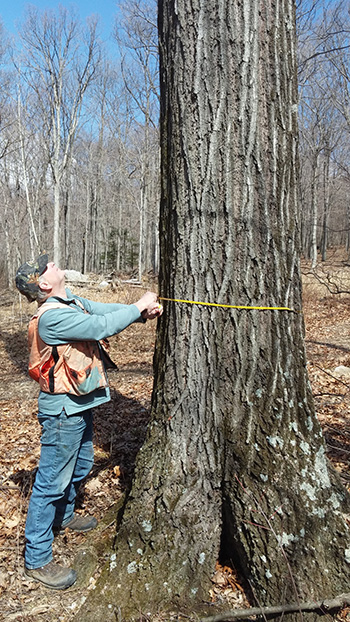
Big mature timber like this red oak is nice but when it gets to this size, it is ready for harvest. It is shading out the forest floor and will not let trees and shrubs grow due to the lack of light. All plants have a certain shade tolerance level and usually the plants that grow in the shade, like ferns and striped maple have very little benefit to wildlife.
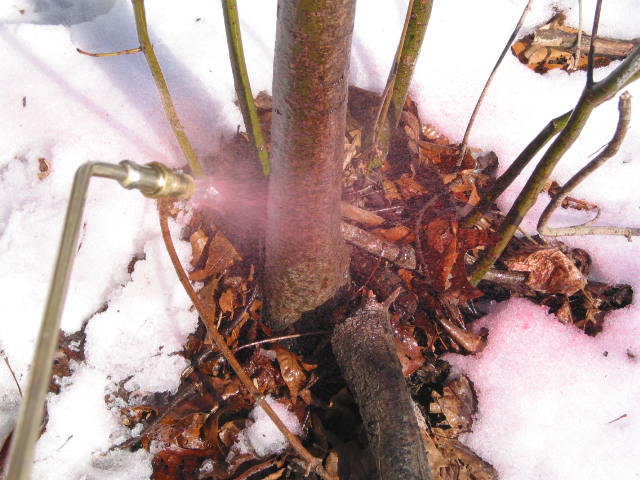
High grading timber – taking the best trees and leaving the junk and letting deer densities go way beyond the carrying capacity of the land results in a landscape that cannot hold much wildlife.
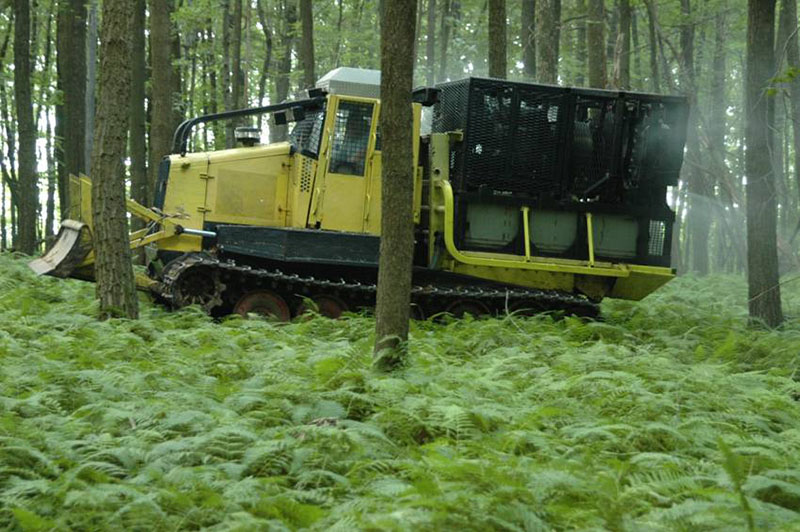
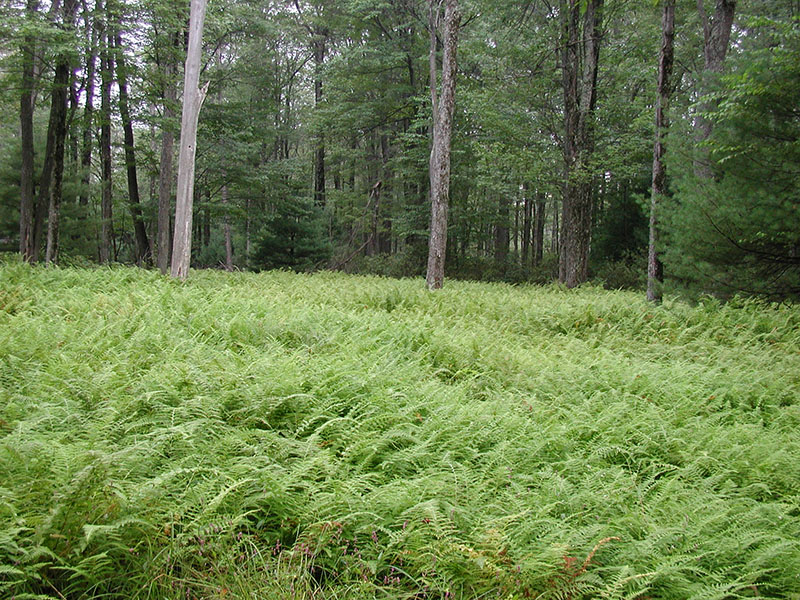
By using herbicides and regeneration type harvesting, we can restart a new forest, providing the young forest environment that wildlife needs to thrive. The photos above show what often happens when there are high deer densities and semi-shaded forest floor after poor harvesting has been done. Since ferns can grow in the shade and are not eaten by deer, they take over the landscape and there is nothing left for deer to eat, especially in winter.
Prescribed Fire
Fire is another important forest regeneration tool. Fire is natural to the forest and plants have adapted to the occasional burning of the leaf litter and dry material on the ground. It kills small trees and shrubs or top-kills them, causing them to resprout with new palatable growth. Some trees need fire to release their seeds from cones and are fire-adapted to out-compete less adapted species. Oak is one family that responds very well to fire in order to take over a forest.
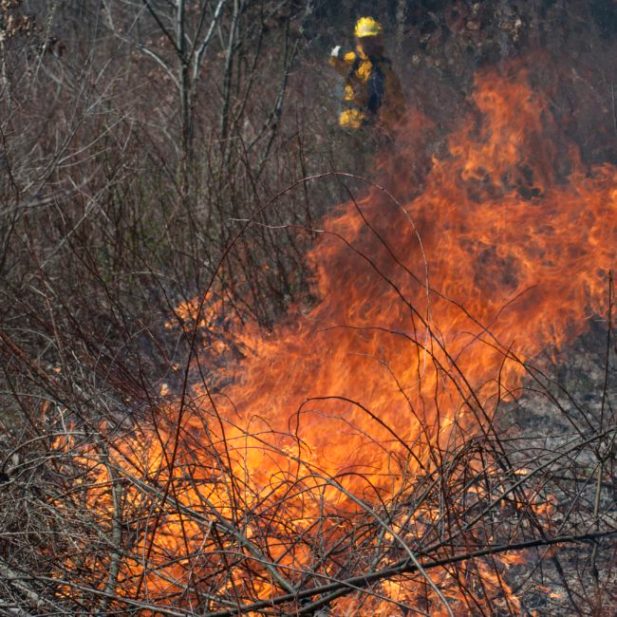
Early Successional Habitat
Early successional habitat is defined as the regrowth of plants after a disturbance. The general successional stages of plant growth is: forbs, then grasses and forbs, then shrubs, then young forest, then pole timber (this is where the food and cover declines) then mature forest. Before man, this disturbance was strictly caused by weather events, fire, disease or insect infestations killing the existing growth. Nature never leaves a vaccuum, so anytime space is created plants that are adapted to be “early successional” will fill the void. These are the plants that provide the most food and cover for wildlife.
Early Man knew how to use fire to create new growth of fruit-bearing plants and browse for them and the animals they consumed. The resilience of pre-settlement forests must have been beyond our imagination. Studies I have read show that primitive people in my region of the Northeastern U.S. consumed nuts and berries and roots from the forest and killed at least one deer per week per family along with elk, bison, wild turkeys and small game. They used fire and semi-nomadic lifestyle to provide a constant source of food and live in balance with local game populations. With all of our knowledge and supposed sophistication, why can’t we do the same? Maybe with the popularity of habitat management on the rise, we can achieve what the Indians were able to achieve to some extent. We may never be able to hunt and gather enough game to feed ourselves, but we can at least provide meat for a couple of weeks out of the year.
Creating deer habitat that benefits other wildlife usually involves some type of disturbance. Now days we can provide this disturbance where and when we want through timber harvesting, burning, clearing forest openings and we can increase early successional growth through planting using modern agriculture techniques.
Maintaining Early Successional Habitat
The use of fire and equipment such as a disc harrow will keep starting the successional process over. We maintain early succession in our yards by mowing the grass. If you never mowed, your yard will eventually turn into a forest.
We can maximize the diversity of our land by maintaining different successional or seral stages of ecological succession. For instance, by running a disc harrow over a forest edge, we can keep the forest at bay and create diversity by timing our discing of different portions of the edge at different intervals. Some of the areas may develop a more broadleaf weed appearance, some grassy, and older ones will have brush. Unfortunately, many of these plants will be foreign invasives that may or may not provide benefit to native wildlife. By using selective herbicides we can pick and choose what grows in our newly disturbed site.
Notice I did not mention mowing in this paragraph. Mowing is not recommended. It encourages growth of plants that respond well to it, usually grasses. I have a client who likes to mow his roads and meadows which encourages and spreads stiltgrass all over his land, which is taking over every opening. Mowing tends to build up debris on the side of the mower deck creating a thick duff layer that nothing can grow through. It also spreads seeds of whatever you are mowing – riding on the mower deck. Where mowing is beneficial is in well-established clover plots that have some annual and biannual weeds that you don’t want to go to seed. If you have tall, stemey red clover or alfalfa, it will encourage new tender growth more palatable to deer.
In areas where trees and shrubs or even where invasive shrubs like heavy honeysuckle infestations are a problem, the use of forestry mulchers or heavy duty brush hog type mowers can set the area back. After removal of foreign invasive plants, you can use the spot spray herbicide method to keep this brush from taking the area back and increase diversity of native plants, or plant what you want, after using herbicides to eliminate the unwanted plants.
Here is a video from my channel on how I deal with heavy honeysuckle infestation: [embedyt] https://www.youtube.com/watch?v=7QxbNqJuDP4[/embedyt]
Here is a playlist of all my wildlife habitat and forestry videos:[embedyt] https://www.youtube.com/embed?listType=playlist&list=PLNEwxPKBDflJ07hrvCMzln0F6s9W7uOTk&v=BFee-vi8MrI[/embedyt]

